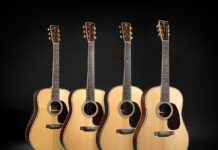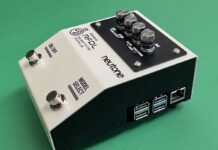Super Sonic Ears, Part 1: The Importance of Ear Training
It should go without saying, but strong ears are a necessary part of your musicianship.
What you hear is what you play, and if you are having issues determining particular types of chords, rhythms or melodies, that will leave you with fewer possibilities, musically.
After teaching a few students on Monday, I decided to have my third cup of coffee. On my way to the coffee shop, I heard a lone goose flying overhead call out. A normal occurrence, I suppose; the only difference was that I recognized the squawk as an ascending major third. Presto, I had the idea for the story you’re reading right now!
I have found—in my experience with pesky guitar players—that many of us possess over-developed physical ability and technique and under-developed ears. A good way to check your ability at playing what you hear is by merely trying to play a simple line that a friend plays for you twice.
If you can play it the first time with no mistakes, you’re off to a great start. If you’re pecking around for the notes like a lone goose, it’s time to train those ears. Just as some of the physical and mechanical aspects of playing an instrument need constant tweaking, your ability to recognize and understand musical sounds needs constant practice and reinforcement. Many of my students and peers have no idea how to go about practicing such skills, so I have developed (and stolen) some of my own ways to grow in this area.
First I suggest that serious musicians consider venturing out to the local community college to take ear-training classes. I have to admit I was completely clueless about the importance of strong ears until I began studying Sight Singing/Ear Training 1 in college. In these classes, you’ll learn how to recognize the distinct sound of melodic intervallic leaps and how to identify them. You will also learn how to write these melodies down on staff paper and break down the rhythm as well.
OK, what if you can figure out melodies already without understanding the rhythm or notating it properly? Great! Now try to explain it to a keyboard player in tab! Remember, professionalism goes a long way, and people will respect your attention to detail. There are many courses out there on the market if you decide not to go to a college class for ear training. Most of them do the same thing. I suggest to first play the major scale and sing along, trying to be as accurate with pitch as possible.
Pick a key that’s easy to sing in. After, you can match pitch try skipping notes in between scale steps. For example, in G major sing and play the note G, skip the note A, and sing the note B. practice it until you feel comfortable singing the note without the support of the guitar and strive to be accurate as possible.
Sing the scale steps as numbers. One is the tonic; two is the second scale step, etc. Eventually you will want to be able to sing the natural minor scale as well as other modes and exotic scales. Try to sing 1 to 5 or 1 to 7. Find songs that start with these particular intervals so you can quickly recognize the sounds and internalize them.
For example, 1 to 8 reminds me of “Somewhere Over the Rainbow,” because the first two notes of the vocal melody are 1 and 8. After that becomes second nature, try ringing a lower note on your guitar and randomly fret some note on another string without looking. Can you identify that interval?
Next week I will continue in this vein, clearly laying out some tips to develop better recognition of the other important ingredient of music: rhythm!
Shawn McGovern is a GIT graduate and sought-out guitar instructor in Providence, Rhode Island, and Los Angeles and may be contacted through his site, shawnmcgovern.com.
Source: www.guitarworld.com







